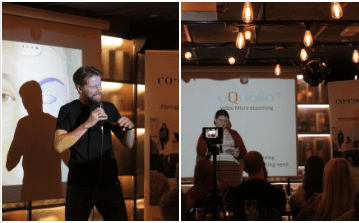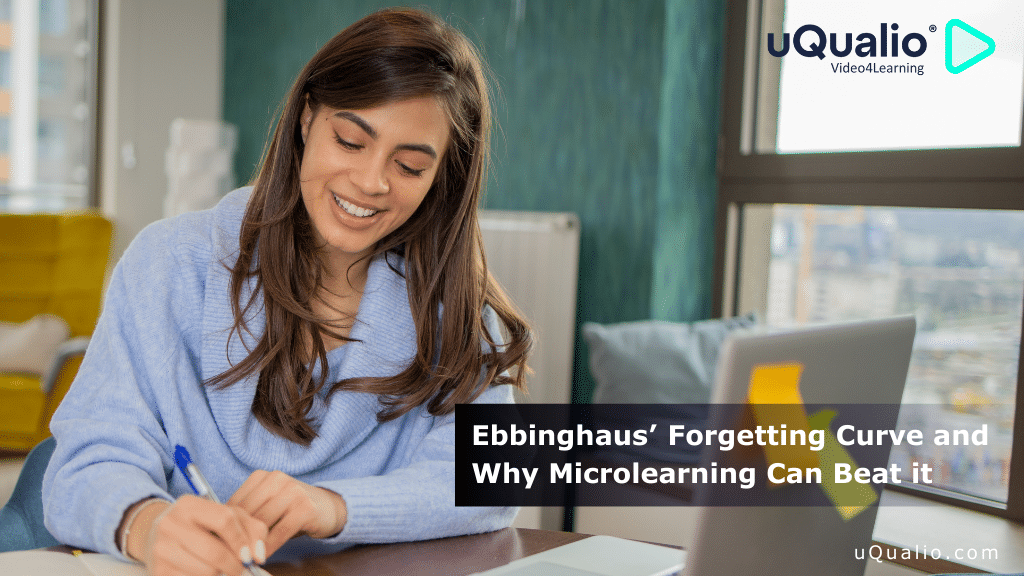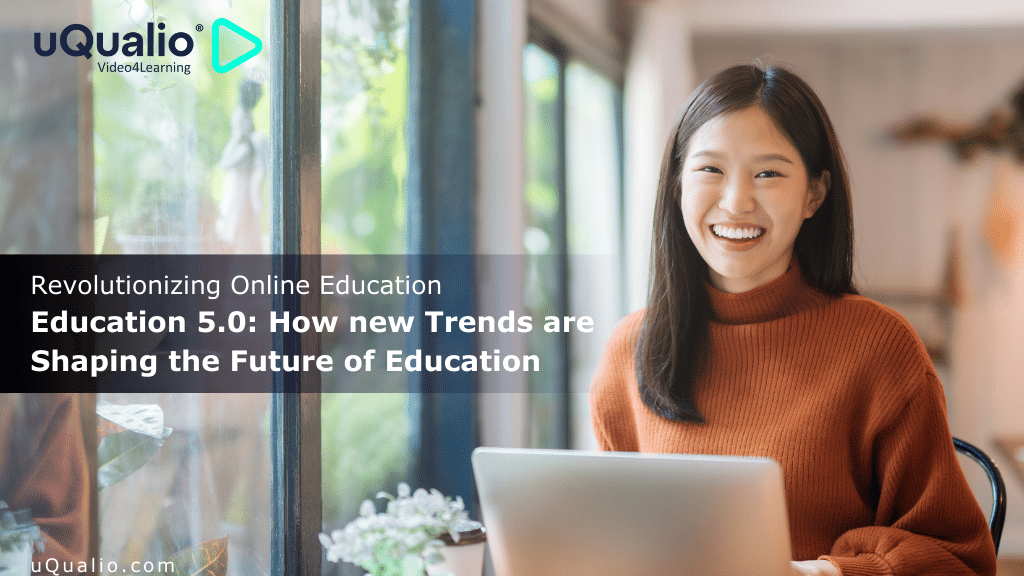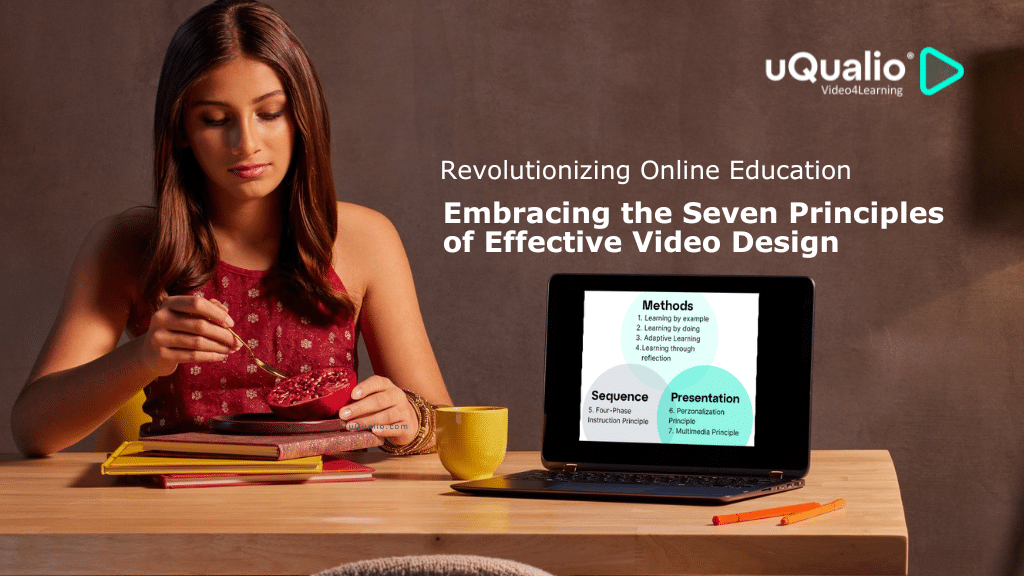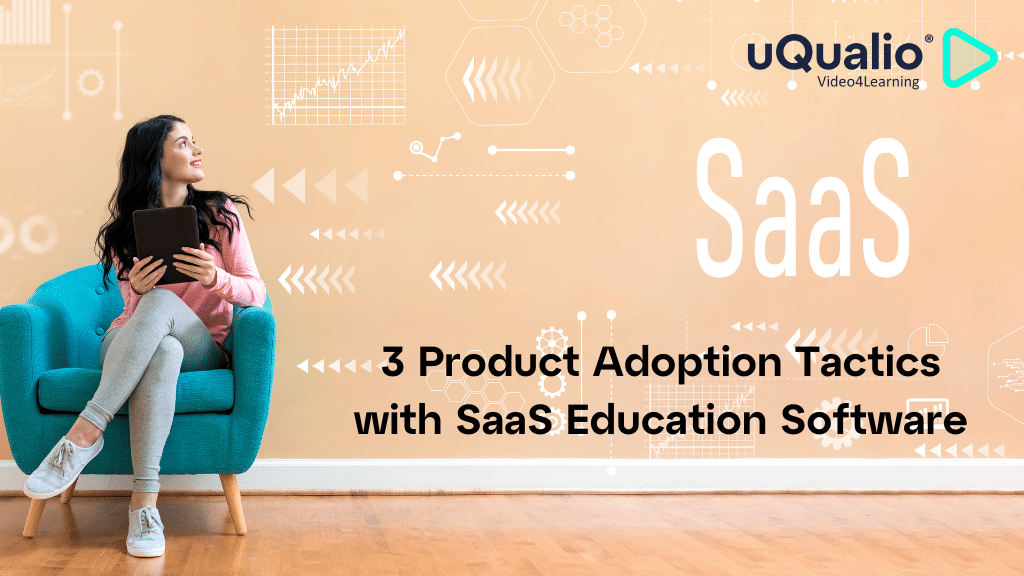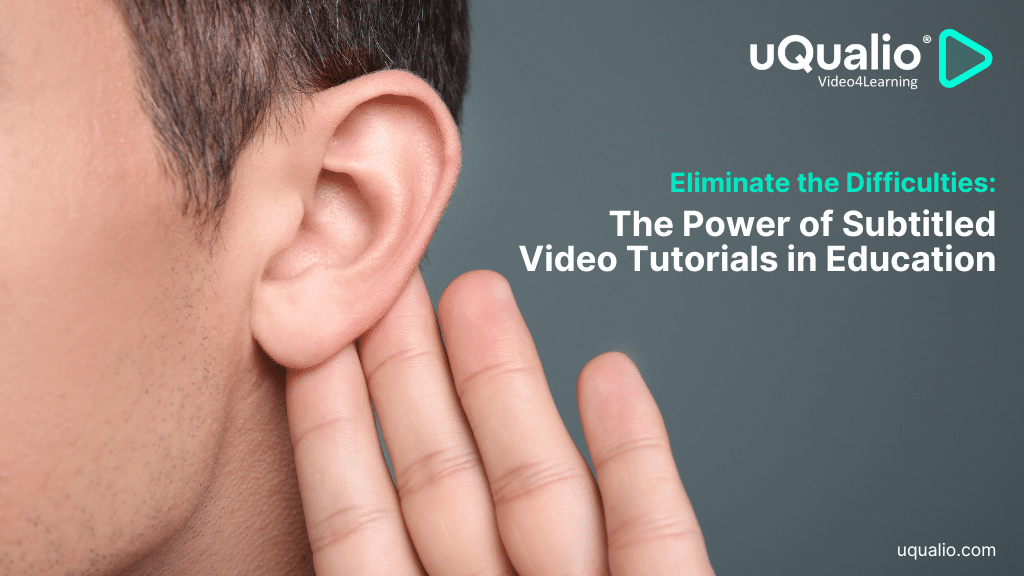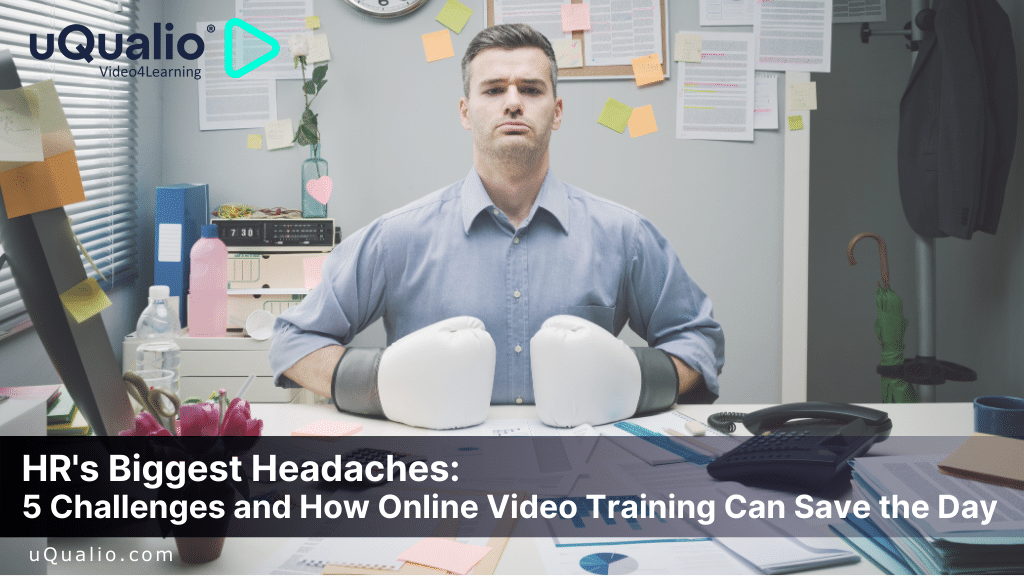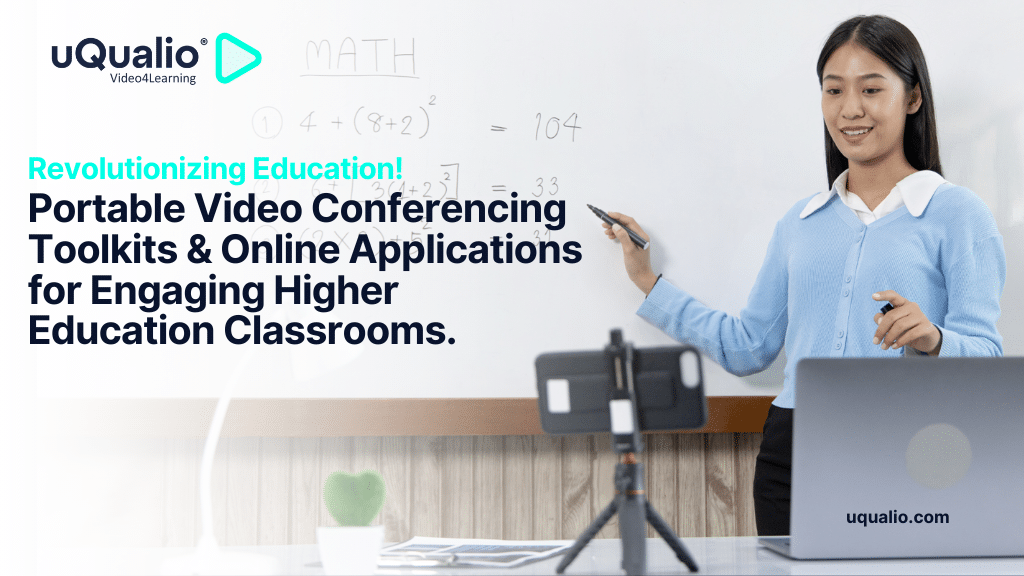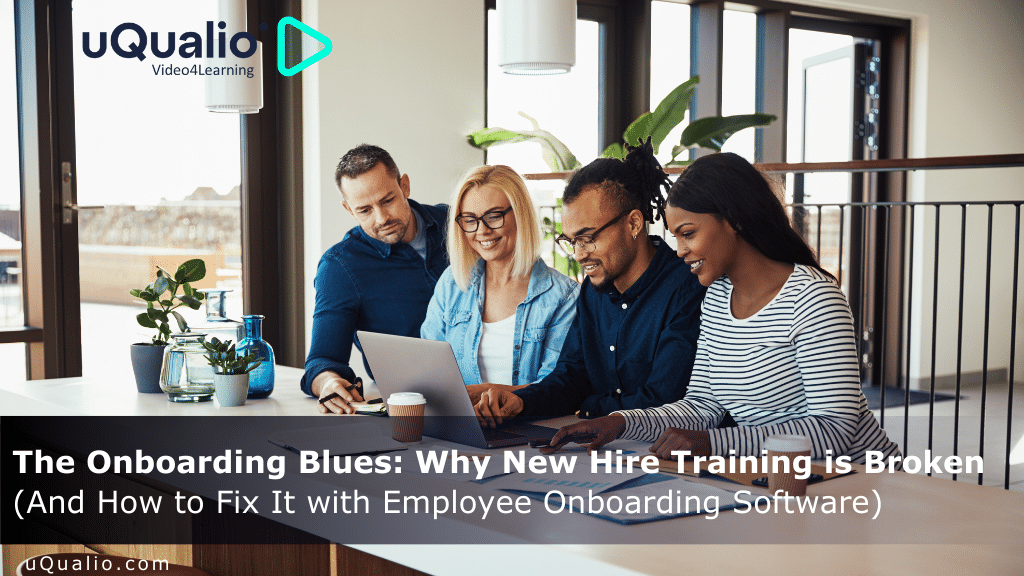Hatla Johnsen, CEO and co-founder of uQualio – an all-in-one video training platform – took up the challenge to disseminate her knowledge and passion for the tech topic “Microlearning and QR codes” in a language that was understandable for a non-academic audience. She passed the screening and became a Tech Explainer 2022 at Aarhus Tech Tales.
The definition of a ‘Tech Tale’ is: “An inspiring, educational and eye-opening talk relating to a technical topic told in a simple, ordinary, and understandable language.”
The host of the evening was Science Communicator and Content creator at Danmarks Radio: Lasse Winther. Lasse is known for DR’s (Denmarks Radio and TV Broadcasting Company) YouTube channel about technology and science. This is where digital stories are disseminated about the interaction of technology and science with society. He did an awesome job – though he was a little unhappy about the fact that many can make videos about topics they like themselves…
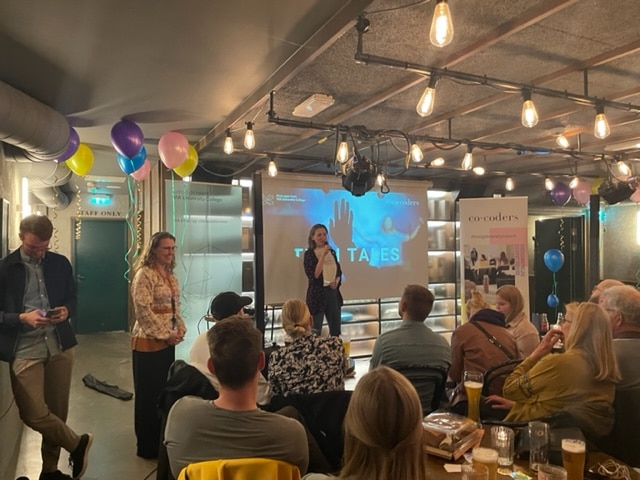
You, of course, should also have the offer to hear what Hatla said about microlearning. So, here you go:
Tech Tales: How Microlearning and QR Codes Make Learning Easy
The UN’s 4th World Sustainability Goal deals with Quality Education for all. The reason for this is that education increases prosperity, reduces poverty, improves health, prevents injustice and inequality, drives sustainable growth, and protects our planet.
I am Hatla Johnsen, CEO and Co-founder of SaaS company uQualio Video4Learning, and our mission is to make an online video training platform that can make the world more educated, so we get more educated and more happy people!
Modern Brain Research
I’m coming to tell you something new!
Most of us in school have learned that teaching should take place for 45 minutes at a time – and it should be an effective way to learn.
But you know what – it actually is not – and there are easier solutions so we can educate everyone…
Modern brain research shows that in order to make effective learning, the learning must be divided into small chunks. According to researchers, it is most effective when it is delivered in chunks of max. 2 to 5 minutes in length.
Researchers have often discussed the maximum amount of things we can remember at a time in our working memory, and the latest studies set the limit at around 3 pieces of information.
The working memory is the memory used to make temporary storage of information while it is being processed before it is stored in the short-term memory.
This means that if you want to support the brain’s natural ability to remember, new knowledge must be divided into small chunks of max. 2-5 minutes which only contain 3 things to remember at a time.
Forgetting Curve
Although learning may seem successful right after it is completed, the ‘forgetfulness curve’ as Ebbinghaus described it, shows that students tend to forget almost 80% of what they have learned within 30 days, unless they use their knowledge immediately, or have it repeated as a positive reinforcement over and over again in order to remember it.
This means that the more people have to apply the new knowledge immediately and/or the more times the new knowledge is repeated over time, the greater the probability that people will remember.
Old Technology in a New Way
Today we are lucky to live in a time of many technological advances.
- Cloud-based server memory, on which you can store large data files such as videos and from which you retrieve data continuously, so you can watch videos over today’s fast and widespread internet. [At audience: ‘All those who have internet with them tonight please stand up’]
- Phones or rather smartphones with a built-in camera that can record and play video and has built-in video editing programs. [At audience: ‘Sit down if you do not have a smartphone’]
- QR codes: These are two-dimensional square codes (slightly a la barcodes). These can be read by e.g. a telephone camera and which send you to a website or similar where you can find eLearning, for example. A QR code can be put on products and machines, making learning available just when you need it. [At audience: Sit down if your phone can not scan a QR code]
All of you who stand up, can watch a video, record a video, scan a QR code, and receive and send messages. And, most of you probably even have your phone with you always…
See just how many of you could easily share your knowledge through video training…
These common well-known technologies enable completely new things in the learning context – namely, what is called video micro eLearning. In short, it is internet-based online video teaching in small pieces of knowledge. These can easily be shared with many people digitally, for example through QR codes. These can be viewed at any digital device such as a computer, a tablet or smartphone. Moreover, you can search for them again and again when you need to get things repeated. So, you have the opportunity to both get and provide knowledge.
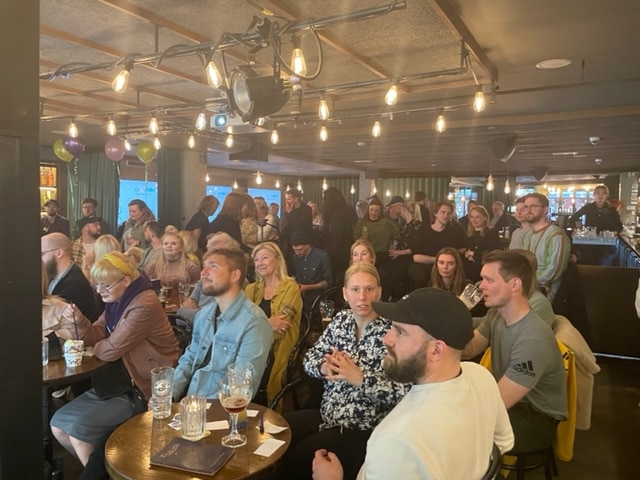
Video as Dissemination
Video for training is extremely powerful. A picture says more than 1000 words. But, a 1-minute video consists of so many small pictures (frames) that play back quickly. That is equivalent to more than 3 million words.
One study showed that after 3 days we tend to remember 10% of the information we saw in words, while we tend to remember 65% of the information we saw if it was both in pictures and words. So, the use of pictures and words together promotes memory
Videos provide better engagement. Research shows that employees feel 75% more comfortable watching a video than reading emails or web articles. In short, if you want your employee training to be enjoyable, make it engaging and interesting. Also, keep it short and precise, so that people do not get bored.
In addition, videos can be played over and over again. So if the memory should fail, then one can just return to the video and refresh the memory.
So, use video for training if you want people to learn more effectively. Even better, if you combine video with images, texts, subtitles, and sound. People learn differently, so when something for people’s senses and preferences, they remember better.
[At audience:] Stand up if at some point in your life you have learned something from watching a video, whether it was in a class or a YouTube tutorial.
[At audience:] Sit down if you thought it was effective…
Make Video Bites Easily
Technology has also made it easy today to make videos yourself either with the phone or on the computer. You can record your screen while talking and showing presentations (screen-casting).
You can also record webinars (online meetings), where you review topics. Subsequently, it can either be cut or played on our platform in chunks to suit the microlearning format. And, you can give each video bite an appropriate headline. This would allow people to easily find the knowledge they need afterward to strengthen their long-term memory.
The content of a video can in fact deal with almost all types of knowledge. Ideally, the focus should be one concept or one skill at a time with maximum one to three clear learning messages. This means that if you want to make an operating video for a coffee machine, you can film small video sequences of the various process steps. These may include how to turn it on, how to turn it off, how to fill the water tank, how to fill the coffee, how to regulate the strength, how to empty the coffee grounds, and how to descale the machine.
When the videos should preferably be short and precise, very little knowledge of making a video is required. Only the phone’s camera is enough. This means, no special lighting or other sophisticated equipment. That makes video production of video chunks easy and inexpensive. This means, it can be made by anyone.
Gamification
Video learning should be combined with gamification. You can insert game elements for learning activities. You can include quizzes, which make it fun and easy to repeat new knowledge. One may also incorporate digital diplomas, which rewards implementation and stimulates people’s competition gene. This means that they feel like taking the next course as well or showing others that they have gained new knowledge by sharing the diplomas on social media or similar.
Gamification increases, among other things, repetition of knowledge and thus people’s commitment.
uQualio Is Based on All These Principles
By taking the well-known technologies, and the latest knowledge about learning, we have put the parts together into an innovative new video micro eLearning platform, which we call uQualio. You upload or link videos, add subtitles, extra documents, and pictures, as well as quizzes. This way, you repeat knowledge several times. Additionally, you can give people online diplomas when they pass the final test. It’s really simple and very effective. Plus, it supports people’s learning and makes it fun and easy to learn.
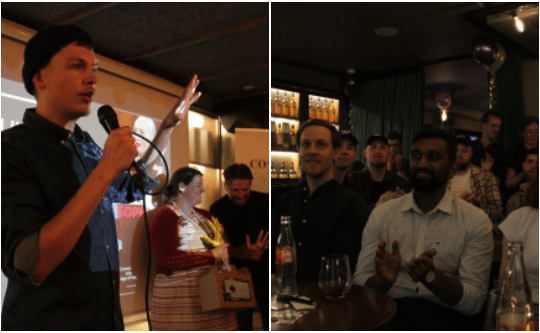
When Is Video eLearning Not Smart?
This form is especially suitable for reviewing facts and theory – but not so much for discussion and questions.
Imagine how great our school system could be if you got Denmark’s best teachers to do a syllabus review on video. That way, the students would not have to spend hours reviewing it, but instead saw the syllabus reviews before class. So, when they came to class, then the time with the teacher could be used for questions, discussion, and reflection. And, they could at any time revisit it again when they needed to. Today, you hear the teaching when it is reviewed. But, if you did not listen properly or were ill, then it’s just a shame!
When Is Video Micro eLearning Smart?
Micro eLearning is particularly useful in workplaces where you need to keep up to date with new knowledge, new rules, technologies, or products.
It is gaining ground in companies, as the short, effective chunks of learning make it easy to learn new things effectively. And at the same time, it supports ‘lifelong learning.’ It is important for employees to be up-to-date and properly dressed for both their current and future work tasks.
In addition, it gives employees a sense of self-worth and control. This is because they are able to study when it suits them on their own and when they need it.
For example, a new cashier does not have to wait for a colleague to get the code knocked out of an item again. She simply scans the QR code on the cash register. And, she has the code in her training program immediately. It gives happy customers who do not have to wait, and not least a happy and committed new employee who can now solve problems with self-confidence on their own.
Or by handing over job functions – where you can show with a video where things need to be done, switched on, etc.
Or, for example, if a sales assistant has actually received training in a product so that they can guide, answer questions and thus feel valuable and get happy customers who now know how fantastic what they have bought is.
Good training gives joy all the way around
And it is super cost-effective, as you can get started with it together because you can easily do it yourself.
Business Applications of Microlearning
We have customers that use Micro eLearning for all sorts of things…
- In the USA, Applied Information makes technology for emergency vehicles that control traffic light systems. They have low training, which for example explains that drivers must flash the turn signal when they turn so that the control system knows that the emergency vehicle is on its way to the next intersection, so they can make a green wave through the intersection. This means that the vehicle does not have to try to get past parked cars. It saves an average of 62 seconds in emergencies – 62 seconds if you are trapped in a car and waiting is a very long time and the time reduction saves lives.
- Pace Processing from Canada puts QR codes on food production equipment. For example, they make Taco filling and folding machine. The QR code on the side of it makes it easy for their customers to find everything. This may range from information about how the machine works, to how it is maintained. This enables their customers to operate the machine and repair it in time so that employees can work and people can eat lots of tacos.
- DigiRehab makes an app that older people can train with at home. So, they stay fit and healthy – in particular for the benefit of themselves and their relatives, but also for society. However, there is a need for the municipality’s SoSu assistants (social and health care assistants) to help the older people with the system. For that, they have made train-your-trainer courses for them.
uQualio Offers Microlearning Free for NGOs
As I told you, the UN’s 4th World Goal deals with Quality Education for All. The reason for this is that education increases prosperity, reduces poverty, improves health, prevents injustice and inequality, drives sustainable growth, and protects our planet.
Micro eLearning can really also make a difference here. Therefore, we donate our effective learning platform to NGOs that make a difference for those who can not pay.
Right now, our video eLearning software platform is used in Pittsburgh, Pennsylvania, among other places. It helps train illiterates in poor areas in child nutrition, child safety on the Internet, and what to know about rental contracts and one’s rights to avoid being cheated. In addition, there are courses on knowledge about pollution. Reason being, some of the people have been exposed to lead poisoning through their drinking water.
People easily find the courses through posters with QR codes. These are set up in welfare offices and other places where they are waiting for help. Since, they have to look and listen to the courses and not read them, they are really effective for the illiterate. This way, one tries to educate them. So, that they too can increase their prosperity, improve their health, and increase equality. At the same time, they can learn to take care of their area for the common good of all.
So What Three Things Should You Bring Home from This Evening?
We live in a knowledge society. But, if you do not share knowledge, then opportunities may arise – and you have now learned:
- Knowledge is most easily remembered in video chunks. Max 2-5 minutes and with max. 3 learning points.
- You can easily record videos and pass on your knowledge using a microlearning platform.
- By passing on knowledge, we make people happy. And, when I’m happy, I smile at the world and it spreads, so the world smiles back…
What’s not to like…
Achieve Effective & Affordable Video Training
– uQualio is an award-winning, easy-to-use, all-in-one NextGen LMS software for any types of online video training.

